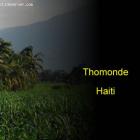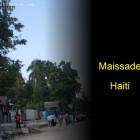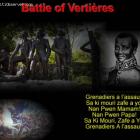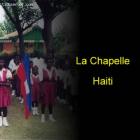ADVERTISEMENT
Environment - Haiti Observer Blog
Environment, Haiti Observer Blog. Read the following articles about Environment
Haiti Ranks Number One on Global Climate Risk Index
The Global Climate Risk Index (GCRI) rated Haiti as the number one country most affected by natural disasters in 2012. The Philippines and Pakistan followed at two and three. Haiti's worst devastation in 2012 was caused by Hurricane Sandy, which hit U.S. shores in the northernmost eastern seaboard states.
Research and advocacy organization, Germanwatch, reports emerging nations make up the majority of nations on the index. But more prosperous nations are inching up the index as well. The U.S., the wealthiest nation in the world, ranked 12th for extreme weather events in 2012. For Russia, who ranked ninth on the index, the rating seems not to have affected either their domestic or international climate policy. Russia's laxness in social policymaking extends to human rights also: it is against gay marriage.
Mining Impact Assessments for Haiti's Environment and People
Exploratory drilling in the mountainous regions of northern Haiti, near the Dominican Republic, has been occurring the last few years. Trace deposits of gold, silver, and copper have been mined, an estimated $200 billion's worth. It sounds like a boon for Haiti's fractured economy, but sobering realities are coming into play, concerning the adverse impact of mining on the environment and people's health. Oxfam America, a development organization, has alerted the government of Haiti (GOH) dangers of mining may outweigh economic benefits derived from its practice.
The Center for Science in Public Participation (CSPP) released a report detailing Haiti's potential to authorize and monitor mining activities, as well as comprehensiveness of its best practices, regarding its laws and regulatory framework. Because mining in Haiti is in its nascence, CSPP's report is asking the GOH to create a considered mineral development plan to balance the needs of mining projects with the equally important needs of the environment. CSPP has suggested a five-step process for a strategic development plan:
Riviere Grise Getting a Facelift for its Levees
Laurent Lamothe, Prime Minister (PM), made a trip to Cul de Sac. Minister of Agriculture (MOA), Thomas Jacques, and other members of the government of Haiti (GOH) went along. Lamothe was there to monitor the construction project fortifying Rivière Grise's levees.
The Ministry of Treasury is financing this endeavor at a cost of 300 million gourdes. The work includes reinforcing levee infrastructure and replanting trees in the area. In April, the initial phase began and the second phase in now in progress.
Lamothe spoke to the media about what this project means to GOH and Cul de Sac residents. He said 50 years have elapsed since GOH has shored up the Rivière Grise levees. He said GOH's viewpoint concerning the populace, watershed, and agriculture is GOH must supply sufficient protection toward tropical storms, forcing people out of their homes, damaging the land. He added GOH understands its stewardship toward the land and its people.
Botanica Garden or Jardin Botanique of Cayes a Green Reserve
Jardin Botanical Gardens of Les Cayes (JBC) was established in fall 2003. Its goals are replenishing ruined areas of biodiversity throughout Haiti and building infrastructure for maintaining biological legacy of island natural resources. JBC wishes to educate Haitian lawmakers legislating protections for Haiti's plant- and animal-life biodiversity is good for the future of eco-tourism, and for the country's morale.
The non-government organization, Botanical Gardens in Conservation (BGCI), works in tandem with JBC to set standards for creating, implementing, and sustaining botanical gardens and arboretums globally. They have defined markers that determine if a green space is a botanical garden, as opposed to civic or decorative parks.
Haiti and Dominican Republic Partner for Reforestation Campaign
The governments of Haiti (GOH) and Dominican Republic (DR) have partnered for the "Re-greening DR-Haiti" reforestation movement. The campaign kicked off at World Environment Day in North East Department, Ouanaminthe. Presidents Martelly of GOH and Danilo Medina of DR planted seeds to demonstrate their intent to reach a tree canopy of 27% by 2020. Currently, green coverage amounts to only 2% of Hispaniola Island. The GOH and DR want to increase it to 4% by 2017.
Martelly noted "the last national afforestation campaign dates back to 1980 . . ." He said in over three decades no attempt has been made to reforest Hispaniola. But he reported 400,000-plus seed plantings have occurred in several departments throughout Haiti in the last six weeks. Danilo Medina also reported 6 million-plus seed plantings have occurred in DR.
Michel Martelly Proclaims 2013 as Year of the Environment
On "World Environment Day", Presidents Martelly and Medina of Haiti and the Dominican Republic (DR) inaugurated "Re-greening DR-Haiti" reforestation initiative in the town of Ouanaminthe. They participated in planting seeds to pledge their commitment to reach a green cover of 27% by 2020. Presently, tree and vegetation cover is at an all-time low of two percent. The consequence is dire: without trees to absorb rain water, the earth erodes and minerals in the top-soil wash away.
Besides the planting ceremony, Martelly and Medina stopped by Center of Germplasm and Production of Fruit and Forest Species of Dosmond, a trilateral partnership between Haiti, DR, and Cuba. They also visited the Massacre River Protection Program, an initiative to prevent flooding of low-lands in Ouanaminthe.
Haitian Villages slowly vanish as Lake Azuei grows
Since 2003, Haiti's Lake Azuei has risen 10 meters to its current elevation of 30. It has also grown to more than twice its original size since 2004 from 155 km2 to 354 km2. A study by students and faculty from City College of New York, who have used environmental equipment to monitor the lake, has gathered evidence, including satellite imagery, which shows that the Lake, once contained solely in Haiti, has now breached the border in the Dominican Republic by a few kilometers.
Interviews taken of the locals, including teachers, fishermen, politicians and farmers shows that not only some have been affected. Knowing the cause of the rising of the lake should aid officials in finding a means to stop it, as the current trend of relocation is only a temporary, wholly untenable fix.
Foret des Pins or The Pine Forest, a Haitian patrimony to safeguard
The long and wizened history of Foret des Pins, an expanse of forest consisting of coniferous tropical and sub-tropical plants, involves widespread deforestation for varying reasons over different points in time. Once, in the first years of the twentieth century, the Pine Forest was about 32,000 hectares, today, only 6,000 hectares remain.
Foret des Pins, which straddles the border of Haiti and neighboring Dominican Republic, has been ravaged through the years by natural disasters such as floods, landslides and earthquakes. It's also suffered under the hands of the government and the population. Widespread illegal logging led to a decree in 1937 declaring the forest as a 'special' site, and a law in 1962 against the clearing of sloping land. These steps did little to stop the cutting down of trees during the Duvalier years as well as the damage caused by farmers who clear the land to create space for their produce.
Bassin Zim Legend and Reality
Bassin Zim, little-known treasure of Haiti, sits along Central Plateau, eight kilometers away from Hinche. It contains waterfalls, coves, and caves. The falls tumble down in white-clouded streams to four azure coves below: Candelabra, Arc-en-ciel, Bassin Zim, and Wells. Implanted within each cove are colonies of caves lined with mineral rocks. Some contain artwork by indigenous Taino Indians before immigration and colonization began.
Considered a spiritual oasis for seekers of nirvana, it is rumored healing here manifests later in positive events in believers' lives. Those who can weather the daunting trek to Bassin Zim are rewarded by an almost unearthly scene of beauty.
Solutions for Deforestation Blocked by Government Incompetence
The island of Haiti was once blanketed by forests. Foreign countries, though, raped the land over many decades. During the era after America was founded, forests had decreased 5%, and during the French occupation, they declined another 45%. By 1956, only 20% remained. By the end of the 1980s, the percentage dropped to 2% left of forested terrain.
Zile Ayiti te yon fwa rekouvèr pa forè. Peyi etranje yo, fe kadejak sou peyi a pandan plizie deseni. Pandan epòk apre Amerik te fonde, forè te diminye 5%, ak pandan okipasyon Franse, yo te diminye yon lòt 45%. Le ou rive nan 1956, sèlman 20% rete. Rive nan fen 1980 yo, pousantaj la tonbe nan 2% kite nan tèren forè.
Our objective is to share with you news and information about Haiti and the people of Haiti. Traditions, habits and the way we were or grew are alive in this site. We highly recommend that you Subscribe to our Newsletter and also share with us some of the things that are memorable and made us unique people.

 Thomonde, Haiti
Thomonde, Haiti  Maissade, Haiti
Maissade, Haiti  Haitian Creole Translation
Haitian Creole Translation  Battle of Vertieres
Battle of Vertieres  La Chapelle, Haiti
La Chapelle, Haiti